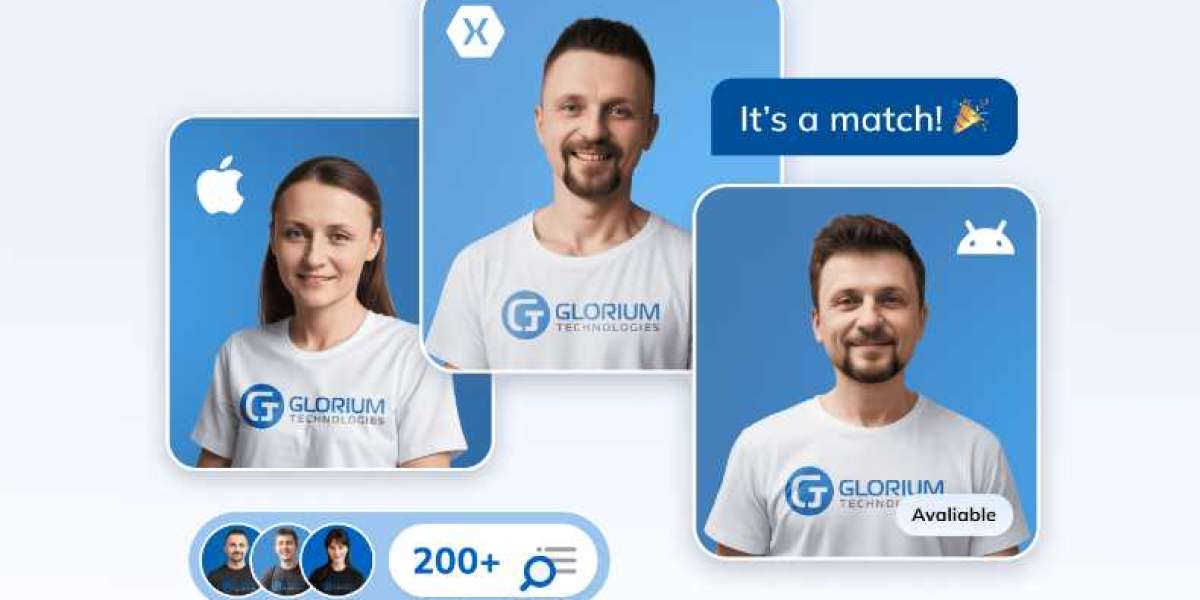In recent years, the rise of cross-platform development frameworks has significantly altered the landscape of mobile application development. Among these frameworks, Flutter, Google's open-source UI toolkit, has gained substantial traction. With its capability to craft natively compiled applications for mobile, web, and desktop from a single codebase, Flutter has become a game-changer for many companies. This article delves into how businesses have leveraged Flutter developers to drive innovation and deliver groundbreaking solutions.
1. Understanding Flutter: A Brief Overview
1.1 What is Flutter?
Flutter is a UI toolkit developed by Google that allows developers to create natively compiled applications for multiple platforms using a single codebase. Introduced in 2017, Flutter enables developers to build high-performance applications for iOS, Android, web, and desktop from a single codebase. Its core components include:
- Dart Language: Flutter apps are written in Dart, a language developed by Google that is optimized for fast performance on both the client and server sides.
- Widget-Based Architecture: Flutter uses a rich set of customizable widgets to build its UI, which allows for highly responsive and attractive user interfaces.
- Hot Reload: This feature enables developers to see changes in real-time without restarting the entire application, enhancing development efficiency.
1.2 Why Choose Flutter?
Companies opt for Flutter due to several compelling reasons:
- Cross-Platform Development: Write once, deploy anywhere. Flutter eliminates the need to maintain separate codebases for different platforms.
- Performance: Flutter’s architecture is designed for high performance, with direct compilation to native code and a highly efficient rendering engine.
- Customizability: Flutter’s widget-based approach allows for extensive customization and creativity in app design.
- Community and Support: A growing community and strong backing from Google provide robust support and continuous improvements.
2. Case Studies of Companies Using Flutter
2.1 Alibaba: Revolutionizing E-Commerce
Alibaba, one of the world's largest e-commerce platforms, leveraged Flutter to enhance its mobile application development. The company faced challenges with maintaining consistent performance and user experience across different platforms. By adopting Flutter, Alibaba achieved:
- Unified Codebase: Alibaba consolidated its codebase, reducing the complexity and time required for cross-platform development.
- Enhanced Performance: Flutter’s high-performance rendering engine helped Alibaba deliver a smooth and responsive user experience.
- Faster Development: The use of Flutter’s hot reload feature accelerated the development cycle, allowing Alibaba to quickly iterate and deploy new features.
2.2 Google Ads: Streamlining Advertising Management
Google Ads, a widely used advertising platform, utilized Flutter to revamp its mobile application. The objectives were to improve user engagement and streamline the advertising management process. Flutter enabled Google Ads to:
- Create a Unified Experience: By using Flutter, Google Ads delivered a consistent user experience across both iOS and Android platforms.
- Accelerate Time-to-Market: Flutter’s single codebase approach and hot reload feature significantly reduced the time required for development and testing.
- Enhance User Interface: With Flutter’s rich set of customizable widgets, Google Ads was able to design an intuitive and visually appealing user interface.
2.3 Reflectly: Innovating Mental Health Apps
Reflectly, a mental health app focused on journaling and self-reflection, adopted Flutter to address performance and user experience challenges. The app aimed to provide users with an engaging and seamless journaling experience. Flutter helped Reflectly by:
- Improving Performance: The app benefited from Flutter’s high-performance rendering engine, ensuring smooth interactions and animations.
- Expediting Development: The ability to use a single codebase for multiple platforms allowed Reflectly to speed up development and release updates more frequently.
- Customizing User Experience: Flutter’s widget-based architecture enabled Reflectly to create a highly personalized and engaging user experience.
3. Leveraging Flutter for Innovative Solutions
3.1 Developing Cross-Platform Applications
One of the most significant advantages of Flutter is its ability to support cross-platform development. Companies can build applications for multiple platforms, including iOS, Android, web, and desktop, using a single codebase. This approach offers several benefits:
- Reduced Development Costs: Maintaining one codebase rather than separate ones for each platform reduces development and maintenance costs.
- Consistent User Experience: A unified codebase ensures a consistent user experience across all platforms, which is crucial for brand coherence.
- Faster Time-to-Market: With Flutter, companies can accelerate their development process, allowing them to bring products to market more quickly.
3.2 Enhancing User Interface and User Experience
Flutter’s widget-based architecture provides extensive customization options, enabling companies to design visually stunning and highly responsive user interfaces. Key benefits include:
- Customizability: Flutter’s rich set of pre-designed widgets, along with the ability to create custom widgets, allows for unique and engaging app designs.
- Smooth Animations: Flutter’s rendering engine supports complex animations and transitions, enhancing the overall user experience.
- Responsive Design: Flutter’s layout system ensures that applications adapt seamlessly to different screen sizes and orientations.
3.3 Accelerating Development with Hot Reload
Flutter’s hot reload feature is a game-changer for developers. It allows for real-time changes to the code without restarting the application, which offers several advantages:
- Faster Iteration: Developers can quickly experiment with new features and make adjustments based on immediate feedback.
- Efficient Debugging: Hot reload simplifies the debugging process by allowing developers to see changes in real-time.
- Enhanced Productivity: The ability to make and test changes quickly improves overall development efficiency and productivity.
3.4 Facilitating Integration with Existing Systems
Flutter’s flexibility allows companies to integrate it with existing systems and technologies. For example:
- Backend Integration: Flutter can be integrated with various backend technologies and services, ensuring compatibility with existing infrastructure.
- Third-Party Libraries: Flutter supports a wide range of third-party libraries and plugins, enabling companies to extend functionality and integrate with other tools.
- API Integration: Companies can use Flutter to connect with APIs and services, facilitating seamless data exchange and interaction.
4. Best Practices for Leveraging Flutter Developers
4.1 Building a Skilled Flutter Development Team
To fully leverage Flutter, companies need to build a skilled development team. Key considerations include:
- Expertise in Dart: Ensure that developers have a strong understanding of Dart, Flutter’s programming language, and its ecosystem.
- Experience with Flutter: Look for developers with experience in Flutter development and a portfolio of completed projects.
- Collaboration Skills: Effective communication and collaboration skills are essential for working with cross-functional teams and stakeholders.
4.2 Implementing Agile Development Practices
Agile development practices complement Flutter’s capabilities by enabling iterative and incremental development. Benefits of agile practices include:
- Flexibility: Agile methodologies allow for flexibility in responding to changes and adapting to evolving requirements.
- Continuous Improvement: Regular feedback and iterative development help in refining and improving the application continuously.
- Enhanced Collaboration: Agile practices promote collaboration between developers, designers, and other stakeholders, leading to better outcomes.
4.3 Emphasizing Quality Assurance and Testing
Quality assurance is crucial for delivering high-quality applications. Best practices include:
- Automated Testing: Leverage Flutter’s testing framework for unit, widget, and integration testing to ensure code quality and functionality.
- User Testing: Conduct user testing to gather feedback and identify areas for improvement in the user experience.
- Performance Testing: Regularly test the application’s performance to ensure it meets performance benchmarks and delivers a smooth user experience.
5. Challenges and Solutions in Using Flutter
5.1 Performance Considerations
While Flutter is designed for high performance, developers may encounter performance-related challenges. Solutions include:
- Optimizing Rendering: Use Flutter’s profiling tools to identify and address performance bottlenecks related to rendering and animations.
- Efficient Coding Practices: Follow best practices for coding and avoid unnecessary computations or complex operations that can impact performance.
- Testing on Multiple Devices: Test applications on a range of devices to ensure consistent performance across different hardware configurations.
5.2 Compatibility with Existing Codebases
Integrating Flutter with existing codebases can present challenges. Solutions include:
- Gradual Migration: Adopt a gradual migration approach, integrating Flutter components incrementally rather than attempting a complete overhaul.
- Interop with Native Code: Utilize Flutter’s platform channels to interact with native code and maintain compatibility with existing systems.
- Thorough Testing: Conduct extensive testing to ensure that the integration does not introduce new issues or conflicts with existing code.
5.3 Learning Curve and Skill Development
Developers new to Flutter may face a learning curve. Solutions include:
- Training and Resources: Invest in training and provide access to resources, such as documentation, tutorials, and online courses.
- Mentorship: Encourage experienced developers to mentor and support newer team members in learning and adopting Flutter.
- Community Involvement: Engage with the Flutter community to gain insights, share experiences, and seek assistance when needed.
6. Future Trends and Innovations in Flutter Development
6.1 Advancements in Flutter Framework
Flutter continues to evolve, with ongoing updates and enhancements. Future trends include:
- Expanded Platform Support: Flutter is likely to expand its support for additional platforms and devices, broadening its applicability.
- Improved Performance: Continued improvements in performance optimization and efficiency will enhance the overall development experience.
- Integration with Emerging Technologies: Flutter may integrate with emerging technologies such as augmented reality (AR) and virtual reality (VR), offering new opportunities for innovation.
6.2 Growing Community and Ecosystem
The Flutter community and ecosystem are expected to grow, leading to:
- Increased Resources: A larger community will contribute to more resources, libraries, and plugins, enhancing the development experience.
- Collaborative Innovations: Community-driven innovations and contributions will drive new features and capabilities in Flutter.
- Enhanced Support: As the community expands, there will be more support and collaboration opportunities for developers.
6.3 Adoption in Diverse Industries
Flutter’s versatility will likely lead to increased adoption across various industries, including:
- Healthcare: Flutter’s cross-platform capabilities can streamline healthcare app development, improving patient engagement and management.
- Finance: Financial institutions can leverage Flutter to create secure and user-friendly applications for managing finances and transactions.
- Education: Educational platforms can utilize Flutter to build interactive and engaging learning applications for students and educators.
Conclusion
Flutter has emerged as a powerful tool for companies seeking to innovate and streamline their mobile application development processes. Hire flutter developers, businesses have successfully addressed challenges, enhanced user experiences, and accelerated time-to-market. As Flutter continues to evolve and gain traction, its role in driving technological advancements and delivering innovative solutions will only become more significant. Companies that embrace Flutter and its capabilities are well-positioned to stay ahead in the competitive landscape of mobile and cross-platform development.
In summary, the strategic use of Flutter can transform how companies approach app development, offering a unified codebase, enhanced performance, and a customizable user experience. As the ecosystem around Flutter grows, so too will the opportunities for businesses to leverage this powerful framework for groundbreaking and innovative solutions.








